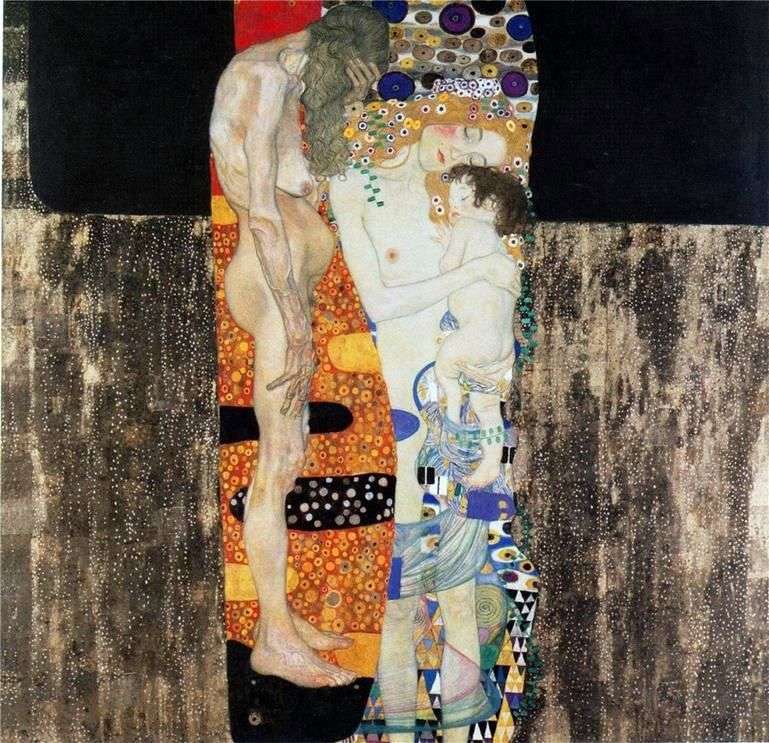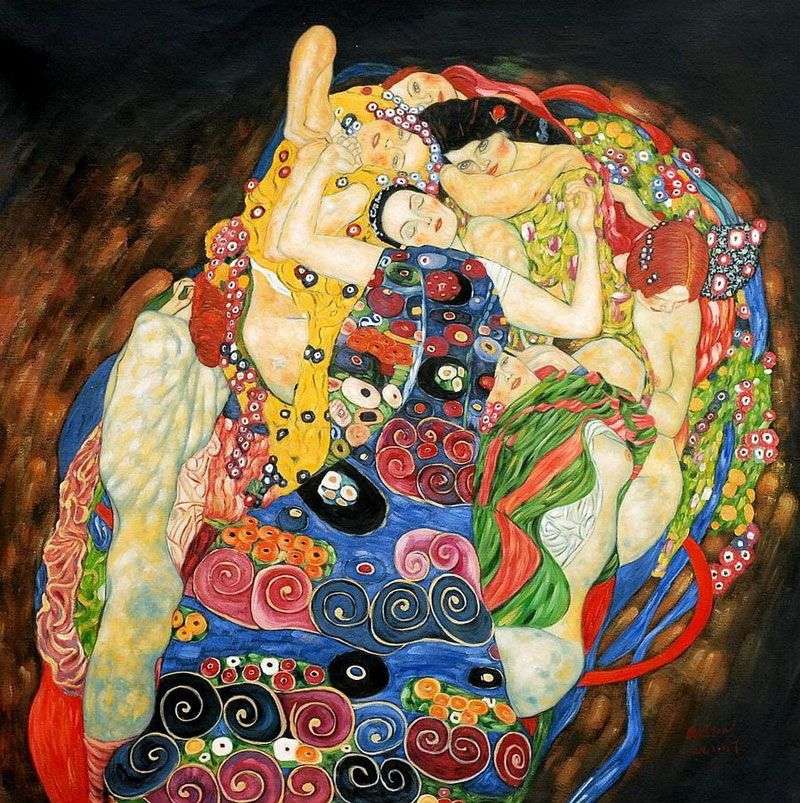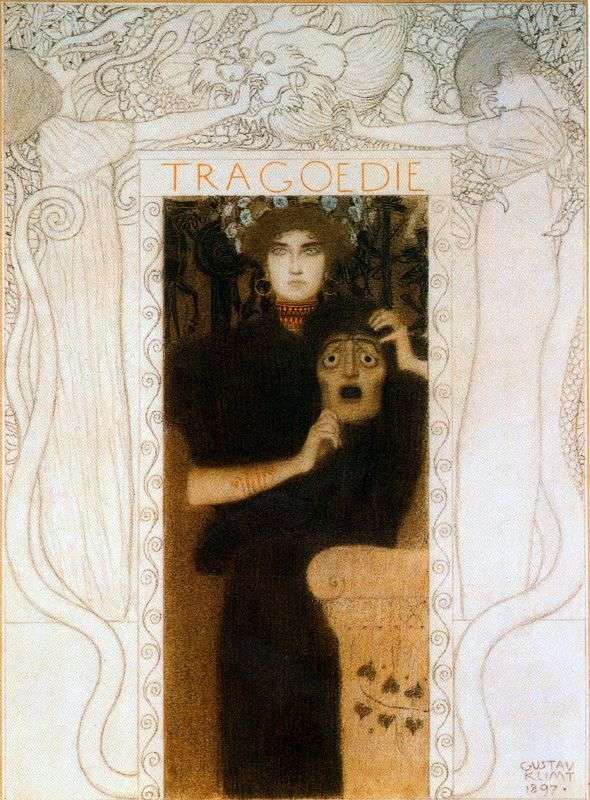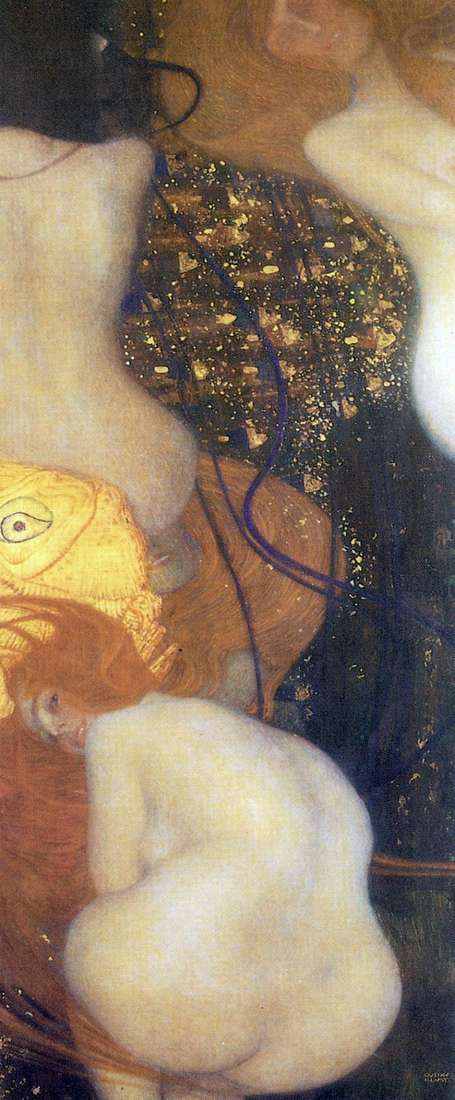
Cloth, tender, warm, strange – “Three ages of a woman”, written no less shocking than his paintings, modernist artist Gustav Klimt in 1905. For the first time these Women were offered for public viewing in 1908 among other works of the author and were immediately acquired by the Roman National Gallery of Modern Art.
In addition to the most interesting plot with a vivid allegory and the personification of the transience of life, eroticism is erased in the picture in the sense that Klimt invested in every female, creating her own – the third sex of Klimt creatures, erotic, enticing, sometimes angular and awkward.
“The three ages of women” were described repeatedly by critics and connoisseurs and spectators, but in the nuances the impression of viewing was similar – the picture is symbolic, reflects the three states of a woman as the cradle of all mankind, here there is a metamorphosis of rebirth, and “damage” and the sorrow of the loss of the past years, and the naive stupidity of youth, and the serene sleep of the beginning… Klimt’s painting has not only a deep subtext, it is laborious in execution, complex in painting technique and multilayered. In addition to the female trio – a child, youth, old age – in the image a phallic symbol is veiled. Apparently, as an integral part of the conception of life and the continuation of the human race.
It is interesting to choose a color solution for each of the hypostases. Bony old age with a deathly pale skin, dry and transparent to the blue veins on the hands. These dry hair, the hand covering the tear-stained eyes, the lost elasticity of the body interspersed with the wheat-blue ripples of wrinkles… A dying woman is the inevitable end of the former beginning. But the intermediate course of life – youth, youth, freshness in the guise of a red-haired girl. It is smooth, like a sheet, white, without rough strokes. Sleepy She, protects one that sleeps with a serene infancy. Youth still remembers childhood, just just stepping into a mature life with a thin bare foot. And the child, a girl, tiny and unprotected – her body is naked, virgin – pure, which should be the beginning of a new life.
Three phases of human life are embodied by Klimt in a picturesque canvas and easily recognizable. Despite the fragmentation of youth and old age, all cycles of life are connected both with the feminine principle and with the calmness of the characters – this is the narration about the inevitability and cyclicity of life and death, picturesque and vivid. The fragment “Three ages of a woman” was taken to decorate the obverse of a coin worth 50 euros of 2003, issued in Italy. This commemorative coin of pure gold is symbolic of the modern “low” evaluation of human life in terms of money, when experience and worldly wisdom cost nothing in life and are so valuable when it is completed. But for money you can not buy life, it remains to cry, remember and regret…
 Athena Pallada by Gustav Klimt
Athena Pallada by Gustav Klimt Virgins by Gustav Klimt
Virgins by Gustav Klimt Water snakes II by Gustav Klimt
Water snakes II by Gustav Klimt Death and Life by Gustav Klimt
Death and Life by Gustav Klimt Tragedy by Gustav Klimt
Tragedy by Gustav Klimt Mother And Child by Gustav Klimt
Mother And Child by Gustav Klimt Panel in the dining room of the palace of Stockle by Gustav Klimt
Panel in the dining room of the palace of Stockle by Gustav Klimt Goldfish by Gustav Klimt
Goldfish by Gustav Klimt